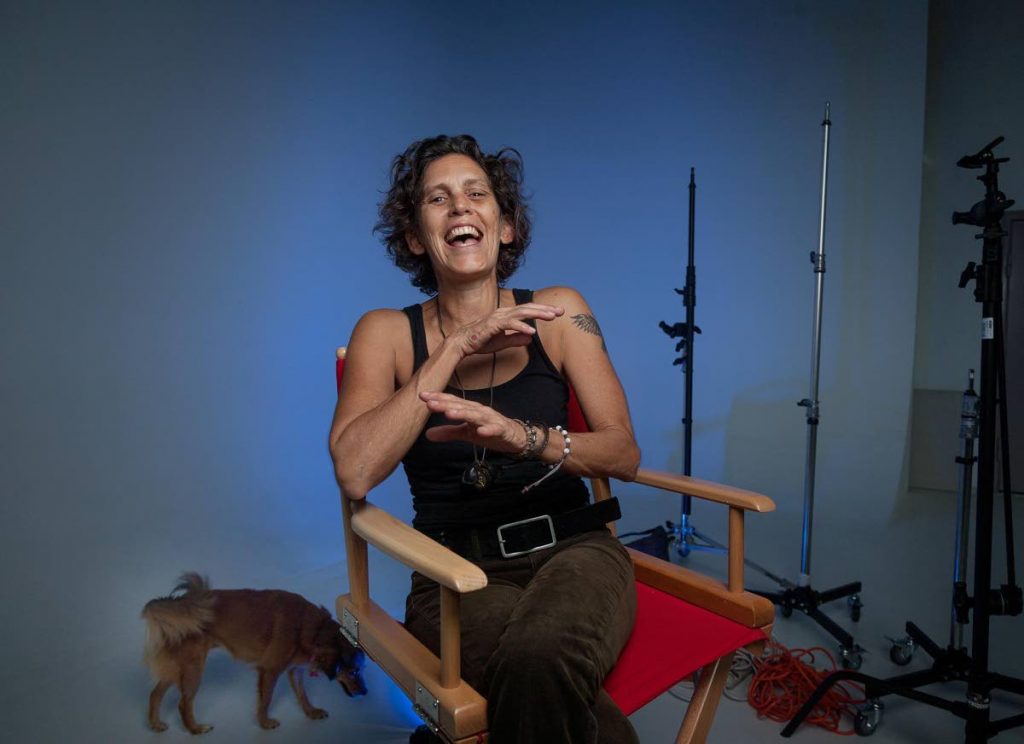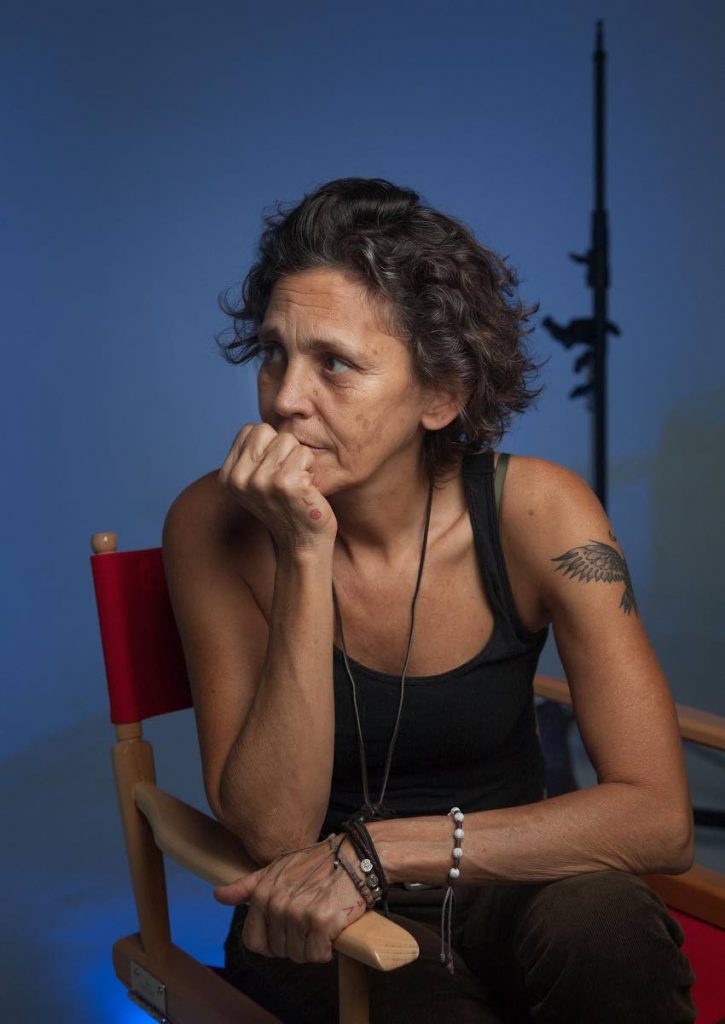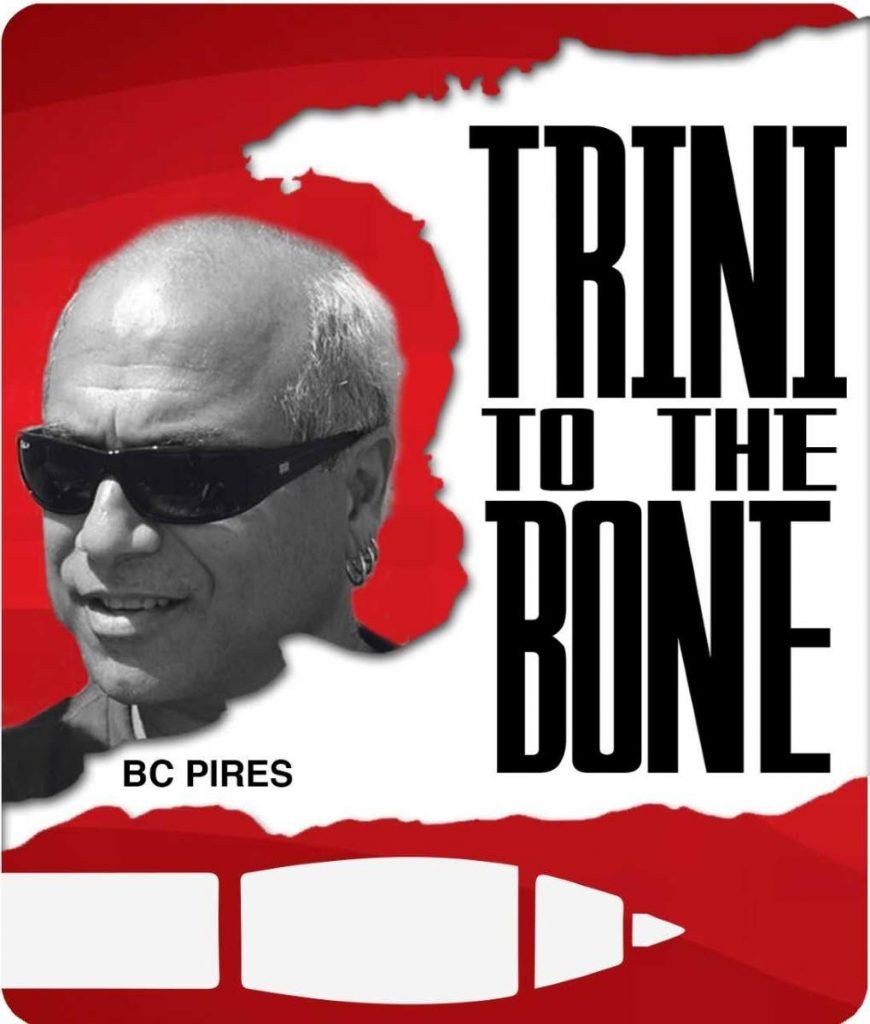National Carnival Geographic

AS TOLD TO BC PIRES
My name is Abigail Hadeed and I’ve photographed Carnival for three decades.
I’ve spent all my life on Long Circular Road, Maraval. I grew up in and now work on the site of what was my grandmother’s home. The empty open Flagstaff Hill was my playground.
Up to this day, I don’t think my parents know that, as a teenager, I sneaked out and went up Flagstaff Hill to see Bob Marley – well, to hear him – when the Wailers played at the Public Services Association Grounds.
I went to St Monica’s Catholic Primary School in upper Pembroke Street, within sight of the Port of Spain Gaol.
Now, it seems like prisoners were constantly escaping, always running through the school!
I went to four secondary schools. I passed for St Theresa’s but, after two years, they asked me to leave nicely.
Then Providence. Then boarding school in Canada.
Then I studied photography in the US.
My grandparents instilled in me the urge to dream, focus and save. It’s a wonderful philosophy.
My uncle in San Fernando collected National Geographic magazines and I loved to visit him every Sunday.
On a small island, this magazine shows you the whole world in amazing photographs. And you think, “I want to be a National Geographic photographer!”
Both my grandmothers were great cooks and me love cooking. So the two things I wanted to do in my life were either cook or be a photographer.
But this was the 80s and the creative thing just wasn’t flying. My parents were, like, nope, you can’t make a living doing either of those!
I finally weaselled my way into my parents paying fo a two-year polytechnic photography school.
I worked for the weekly newspaper the TnT) Mirror for a year and it was fantastic!
My father’s friends were like, “How come she’s not at the Guardian or the Express?”
I would not have seen the Trinidad I saw – and photographed – without that first year at the Mirror.
I faced no horrors because of my fair skin or youth.
Some of the assignments were challenging but, to be honest, those were the things that (moulded me). The rude awakening started there.
Assignments like being sent to photograph a man hanging from a tree in Belmont. The first Aids patient in Caura (hospital). The Abdul Kareem murder – I had to go to the mosque and come back with a photograph of the man in his coffin!
It was intense.
In the late 80s, in, luckily, a big American car, we were hit head-on by a drunk driver. Seatbelts weren’t a thing in those days and I literally made an impression on the dashboard of the car!
I was unconscious, fractured my skull, broke my jaw, punctured (organs)… I was a hot mess and tied up in hospital for months.
But I got some money from it and set up my first photo studio in 1987. The grip-and-grin, handing-over-of-cheques stuff.
My first advertising campaign was to shoot (then Miss Universe) Penny Commissiong for Standard.
I produced the local movie Play the Devil, which did really well internationally.
We spent two weeks shooting in Paramin and, every day, we’d drive into my studio and lock the door. It was really lovely not to have to unpack the grip truck every day.
One day, Judy Sanchez, who was like an artistic mother to me, said, “Oh, we’re working on Minshall’s mas at Bottlers Ltd” – at the corner of Long Circular and Western Main Roads.
They were making (the costume based on the nuclear bomb dropped on) Hiroshima in Stephen Mendes’ driveway and my eyes opened HUGE. It was incredible!
So everything fell right into place and, from then, every Carnival, I was just walking around, shooting what, to me, was interesting.
Photographing traditional mas and steelband has been my most deeply spiritual experience of the last 30-odd years.
I can’t begin to convey my appreciation for the people who opened themselves to my gaze.
In my own way, in my archive, the bodies of work I’ve chosen to follow and shoot, I think I’ve created my own National Geographic over the years.
Traditional mas has been squeezed out of Carnival. Mas has been betrayed by capitalism, that hardcore just wanting to sell and make money.
That wasn’t what Carnival started out as. It started as fighting for freedom, fighting against oppression.
Where it’s come to is a bit sad.

Young Trinidadians have to learn that Carnival is not about a party and wining in the street. Young people don’t know who Roaring Lion was or what a dragon mas is.
It makes me mad that the real ole mas is gone. We had a very educated working- and middle class that understood the English language and was able to intelligently comment in a very funny way. People had the most satirical things to say about politics, worldwide, not just here.
Now you only find it one-one, one-one.
Even as a one-person show, I want to “give back” to my community, so I went to Tobago to do a week of pro-bono work for the NGO Healing with Horses.
I found my dog, Small-E, there, in Tobago. WALL-E was a favourite film of mine. She’s a Buccoo dog, a Sunday School babe!
I shot her for the 2018 Animal Welfare Network calendar.
Smalls has become my mascot. She’s supposed to be a rescue animal.
But I rescued her only once and she rescues me every day.
We survive in ecosystems. The big one is the Earth, how we breathe, eat and treat the planet.
I feel we are microcosms of that bigger universe. If you create, in a small space or context, the ecosystem you want to live in, breathe, eat, hear, see and feel, that extrapolates out.
I’m hoping people will feel safe in my studio space.
Last year, the estate of Derek Walcott put on Ti-Jean and His Brothers at the Queen’s Hall. There’s Bocas Lit Fest.
There was an amazing pan concert at NAPA. There’s Panorama and Carnival!
And THEN you can go hiking – rivers, waterfalls, beaches, all of Tobago. What more could you want? Really, I’m gobsmacked when Trinidadians tell me they’re bored!
Trinis are probably the most beautiful people on the planet.
Trinidad and Tobago is a difficult space to navigate and can be quite hard – but I love it!
We don’t understand what and how much we have.
The only thing we don’t have is a desert. But if we go on with the industrialisation, we will.

Read the full version of this feature on Saturday at www.BCPires.com


Comments
"National Carnival Geographic"